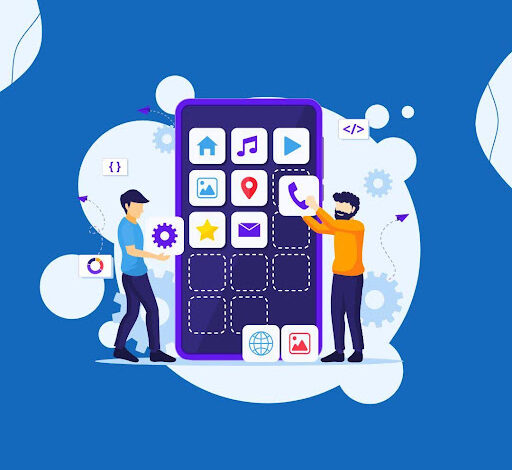How Much Does It Cost to Develop an Enterprise Mobile App in the UK?

Building an enterprise app is no longer a side project—it now sits at the centre of many digital-transformation plans. Walk into any UK boardroom and you will hear the same pressures: streamline processes, serve customers faster, equip employees with better tools, and do it all under tightening budgets. A mobile app can tick every one of those boxes, but the first question the finance lead asks is always the same: “What will this cost?” Whether you’re working with an in-house team or partnering with a seasoned mobile app development company in London, the cost can vary significantly depending on your goals and infrastructure.
That question has no single answer. An app for basic order tracking will not carry the same price tag as a multi-tenant, AI-powered platform that syncs with six legacy systems. Some firms manage a lean launch for under $40,000 (29208 GBP). Others invest $300,000 (219059 GBP) or more in a solution that touches every corner of the business. The spread feels wide because so many variables push the number up or down.
This guide walks through those variables affecting the enterprise mobile app development cost in the UK with a practical lens. Rather than chasing industry averages that never quite fit, you will see exactly where the pounds go and what choices shift the total. By the end you should have a clearer path to budgeting, whether you are sketching a minimum viable product or mapping a full-scale suite.
Factors Affecting the Cost to Develop an Enterprise Mobile App in the UK
1. App complexity and feature depth
Think of complexity as the difference between a pocket calculator and an enterprise resource-planning module. A simple approval workflow app might handle three screens and a single database. A sophisticated field-service tool could offer real-time GPS, offline data sync, role-based dashboards, and push notifications. Every extra feature adds design hours, development hours, and testing hours, so costs climb fast once the wish list grows past core needs.
2. Design and user experience
Employees will not adopt a clunky app, no matter how powerful the engine beneath it. Clean layouts, simple navigation, and accessible colour schemes all demand seasoned designers. Enterprise teams also run usability sessions and refine wireframes to match brand guidelines. Those iterations safeguard adoption, yet each round of polish adds to the invoice.
3. Platform choice: iOS, Android, or both
A native build harnesses every hardware perk of each device but requires two separate codebases. That usually doubles the engineering effort. Cross-platform frameworks offer a single code set that compiles for both stores, trimming hours but sometimes limiting performance for high-end features. The decision is rarely just about cost—it is about balancing speed, maintenance, and user expectations.
4. Integration with existing systems
Most enterprise apps cannot live in isolation. They pull customer data from a CRM, log hours to a finance package, or trigger tasks in an ERP. Every link means API work, security checks, and joint testing with teams that own those systems. The more moving parts, the deeper the integration budget.
5. Security and compliance
A public breach costs far more than robust encryption and penetration tests. UK businesses must meet GDPR, handle role-based access, and often satisfy industry-specific rules such as FCA or NHS guidance. Each layer pushes up effort in architecture, development, and audit documentation—but skipping any step invites legal and reputational risk.
6. Ongoing maintenance and support
Launching an enterprise app is the halfway mark, not the finish line. New OS versions ship twice a year, security patches surface every month, and user-feedback tickets appear the moment the app hits production. Someone has to triage bugs, roll out compatibility fixes, harden defences, and slip in small feature upgrades that keep teams engaged. Most firms earmark ten to twenty per cent of the original build budget each year for this cycle of updates and support. Skimp on it and performance slips, ratings fall, and the very efficiencies the app promised start to erode. Allocate wisely and the app stays sharp, secure, and aligned with ever-shifting business goals.
Five Ways to Optimize the Enterprise App Development Budget
- Start with an MVP
List the must-have features that solve a real business pain and drop everything else to phase two. A tight MVP reaches users sooner, validates assumptions, and buys time to secure extra budget for later enhancements. - Explore cross-platform development
If your feature set leans on common device functions, frameworks such as Flutter or React Native can deliver near-native performance while sharing up to 90% of the code. You cut development hours and maintenance overhead with minimal user-experience trade-off. - Use trusted open-source libraries
Authentication modules, chart components, and data-sync engines already exist in well-maintained repositories. Adopting them shortens sprints and reduces bug risk. Just run a licence check and a security scan before committing. - Outsource selectively
Keep strategic product ownership and critical IP in-house while outsourcing commodity tasks—like routine front-end screens or test-case automation—to reliable partners in lower-cost regions. Clear documentation and overlapping work hours make the blend run smoothly. - Bake testing into every sprint
Waiting until the end to test the app usually invites expensive rework. Automated unit, integration, and UI tests run with each commit, catching issues when they are quick to fix. The upfront investment in test scripts comes back as fewer hot-fixes and faster release cycles.
Estimation of Typical Cost Ranges in the UK Market
| Project scope | Price range | What you get |
| Lean MVP | $40,000 – $80,000 | Core workflow, basic UI, single-system integration, essential security, one platform or cross-platform build |
| Mid-range app | $90,000 – $150,000 | Custom design, dashboards, cloud hosting, multi-platform support, role-based access, API links to two or three systems |
| Full enterprise suite | $160,000 – $300,000+ | Advanced analytics, offline mode, complex integrations, AI modules, rigorous compliance, extensive testing, ongoing DevOps pipeline |
These brackets reflect a blend of UK labour rates and typical timelines, yet every quote will shift once scope and team mix become concrete.
Summing Up
An enterprise mobile app can streamline workflows, lift employee engagement, and open new revenue channels—but only if the budget aligns with the goal. Complexity, design polish, platform coverage, integrations, and security all nudge the number up or down. By focusing on an MVP, re-using proven components, and choosing the right development partners, UK businesses can land the functionality they need without unwelcome surprises on the invoice.




